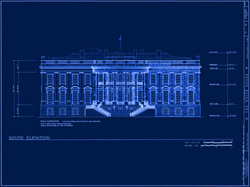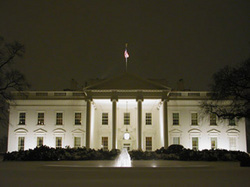Architecture
The term architecture can refer to either hardware or software, or to a combination of hardware and software. The architecture of a system always defines its broad outlines, and may define precise mechanisms as well. Architects plan, design and review the construction of buildings and structures for the use of people. Architects also coordinate and integrate engineering design, which has as its primary objective the creative manipulation of materials and forms using mathematical and scientific principles.A blueprint is a type of paper-based reproduction usually of a technical drawing , documenting an architecture or an engineering design. More generally, the term "blueprint" has come to be used to refer to any detailed plan. 1
Various base materials have been used for blueprints. Paper was a common choice; for more durable prints linen was sometimes used, but with time, the linen prints would shrink slightly. To combat this problem, printing on imitation vellum and, later, polyester film was implemented.
Below are two examples of how the blue prints were made into great architectural feats. One having to do with ships and the other having to do with homes.
Above on the left side shows the simple drafted blueprint of a French ship. This simple blueprint of a grand ship was later developed and actually became a great ship as seen in the top right picture. The Belle is a clear example of how in architecture, a simple boat design can actually be executed and can become a grand ship after a few years of development. Some addition information about the Belle is below.
On a cold winter day in 1687, the small French ship Belle ran aground on the Texas coast, the victim of a run of bad luck and a howling north wind. The Belle was the last of four ships of the expedition led by Robert Cavelier, sieur de La Salle. La Salle had come to establish a colony near the mouth of the Mississippi River with multiple aims that included providing a warm-water port to serve the fur trade and a base for invading Mexico. France and Spain were then at war, and La Salle, with the backing of his king, intended to challenge Spain's domination of the Gulf of Mexico. 2
This was not La Salle's first journey to the New World. In 1669 La Salle had set out to explore the Great Lakes region of North America. By 1682 he had reached the Illinois country, establishing trading posts along the way. From the mouth of the Illinois River, he began a journey of more than a thousand miles, following the Mississippi River to its mouth in the Gulf of Mexico. There he laid claim, in the name of Louis XIV, king of France, to roughly one-third of the territory of today’s continental United States. In light of such monumental successes and the hope of conquering more territory—including the Spanish silver mines in northern Mexico—the king was persuaded to back La Salle’s grandiose plan, providing ships, supplies, and personnel to carry out his vision. The king’s largesse, however, had limits. Whereas La Salle saw a need for four ships, the monarch agreed to provide only two: the small frigate Belle and the escorting warshipJoly. To augment his force La Salle—drawing ever more heavily on borrowed money—leased from private merchants two additional vessels, L’Aimable and the ketch Saint François, and purchased additional trade goods and supplies. (refer to work cited “architecture”) 2
The White House is the official residence and principal workplace of the President of the United States. Located at 1600 Pennsylvania Avenue NW in Washington, D.C., the house was designed by Irish-born James Hoban, and built between 1792 and 1800 of white-painted Aquia sandstone in the Neoclassical style. It has been the residence of every U.S. President since John Adams. When Thomas Jefferson moved into the house in 1801, he (with architect Benjamin henry latrobe) expanded the building outward, creating two colonnades that were meant to conceal stables and storage (refer to work cited “architecture”) 3
Even one of the most famous homes and buildings in history were built off of an architectural blueprint. The blue print as shown on the top left shows the blueprint of the white house. This blue print was later developed into what we now know as the white house, or the home to the leader of our nation.




